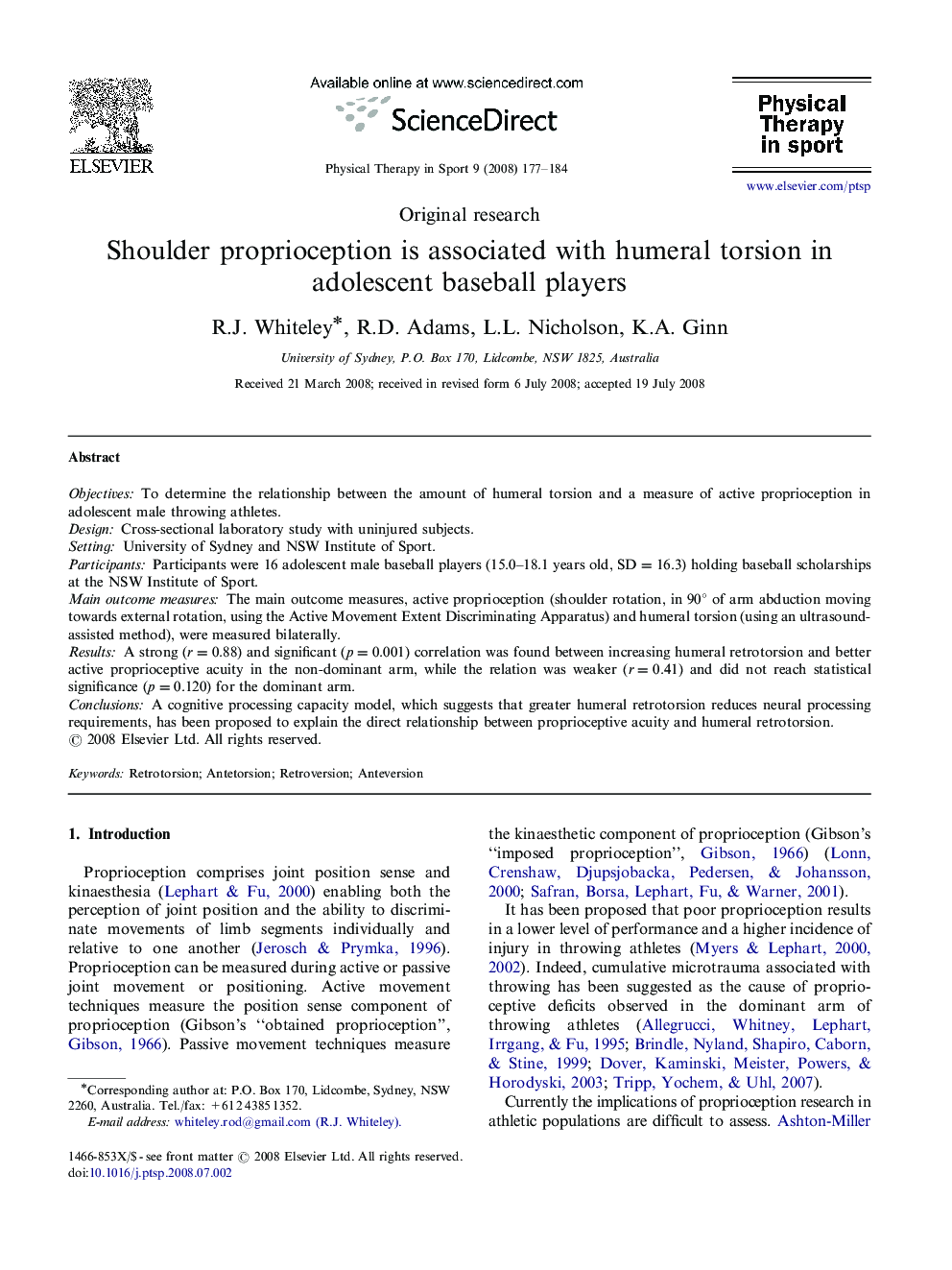| Article ID | Journal | Published Year | Pages | File Type |
|---|---|---|---|---|
| 2714254 | Physical Therapy in Sport | 2008 | 8 Pages |
ObjectivesTo determine the relationship between the amount of humeral torsion and a measure of active proprioception in adolescent male throwing athletes.DesignCross-sectional laboratory study with uninjured subjects.SettingUniversity of Sydney and NSW Institute of Sport.ParticipantsParticipants were 16 adolescent male baseball players (15.0–18.1 years old, SD=16.3) holding baseball scholarships at the NSW Institute of Sport.Main outcome measuresThe main outcome measures, active proprioception (shoulder rotation, in 90° of arm abduction moving towards external rotation, using the Active Movement Extent Discriminating Apparatus) and humeral torsion (using an ultrasound-assisted method), were measured bilaterally.ResultsA strong (r=0.88) and significant (p=0.001) correlation was found between increasing humeral retrotorsion and better active proprioceptive acuity in the non-dominant arm, while the relation was weaker (r=0.41) and did not reach statistical significance (p=0.120) for the dominant arm.ConclusionsA cognitive processing capacity model, which suggests that greater humeral retrotorsion reduces neural processing requirements, has been proposed to explain the direct relationship between proprioceptive acuity and humeral retrotorsion.
